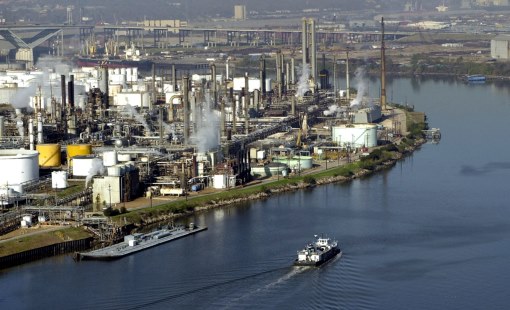Energy
Sharp Rise in Crude Oil Inventories Unlikely to Lower Gasoline Prices
Published:
Last Updated:

Total gasoline inventories decreased by 200,000 barrels last week and are near the lower limit of the five-year average range. Total motor gasoline supplied (the EIA’s measure of consumption) averaged more than 8.8 million barrels a day over the past four weeks, up about 4.6% from the same period a year ago.
Distillate inventories fell by 1.3 million barrels last week and remain near the lower limit of the average range. Distillate product supplied averaged more than 3.8 million barrels a day over the past four weeks, down by 1.4% when compared with the same period last year. Distillate production averaged 4.9 million barrels a day last week, about 100,000 barrels a day more than the prior week’s production.
ALSO READ: Conoco Sets Goal for Double-Digit Shareholder Returns
Tuesday evening, the American Petroleum Institute (API) reported that crude inventories rose by 7.6 million barrels in the week ending April 11, together with a decline of 500,000 barrels in gasoline supplies and a drop of 1.1 million barrels in distillate supplies. For the same period, Platts estimated a rise of 2.4 million barrels in crude inventories, a decline of 1.7 million barrels in gasoline inventories and a drop of 200,000 barrels in distillate inventories.
West Texas Intermediate (WTI) crude prices closed at $103.75 on Tuesday and were trading up about 1% before the EIA report at around $104.50 a barrel. The WTI price slipped to around $104.30 shortly after the report was released.
For the past week, crude imports averaged 8.3 million barrels a day, up about 595,000 barrels a day from the previous week. Refineries were running at 88.8% of capacity, with daily input over 15.6 million barrels a day, up 272,000 barrels over the previous week’s average.
Imports were higher again last week, and refinery runs are again approaching 90% of capacity as turnarounds and maintenance work are completed. The high crude prices are a reaction to the touchy situation in Ukraine. Expectations for additional oil coming onto the market from Libya is countering some of those fears. Oil traders do not like uncertainty, and the conflict between Ukraine and Russia practically defines uncertainty.
According to AAA, the current average pump price per gallon of regular gasoline is $3.653, up from $3.601 a week ago and $3.521 a month ago. Last year a gallon of regular cost $3.522 on average in the United States. Gasoline prices continue to rise this year compared with last year, when they had begun falling by this time.
ALSO READ: Enbridge, Valero Get Approval to Export Crude
Here is a look at how share prices at three U.S. producers are reacting to the latest report.
Exxon Mobil Corp. (NYSE: XOM) traded up about 0.73%, at $99.40 in a 52-week range of $84.79 to $101.74.
Chevron Corp. (NYSE: CVX) traded up 0.87%, at $121.35 in a 52-week range of $109.27 to $127.83.
Continental Resources Inc. (NYSE: CLR) traded up about 0.15% at $130.22, after posting a new 52-week high Wednesday morning of $134.01. The 52-week low is $72.35. Continental is the largest producer in the Bakken shale play.
ALSO READ: The Argument for $75 Oil Should Be for $95 Oil
Retirement planning doesn’t have to feel overwhelming. The key is finding expert guidance—and SmartAsset’s simple quiz makes it easier than ever for you to connect with a vetted financial advisor.
Here’s how it works:
Why wait? Start building the retirement you’ve always dreamed of. Click here to get started today!
Thank you for reading! Have some feedback for us?
Contact the 24/7 Wall St. editorial team.